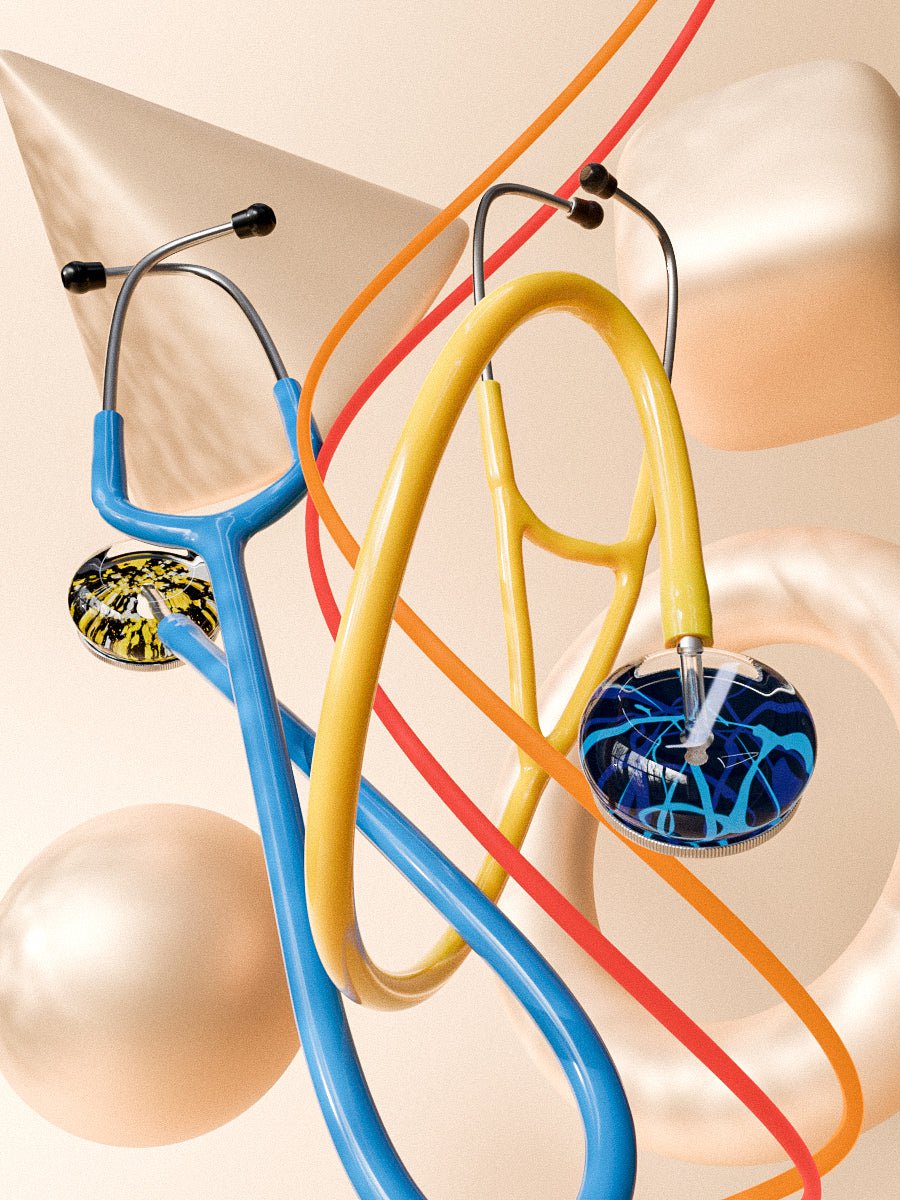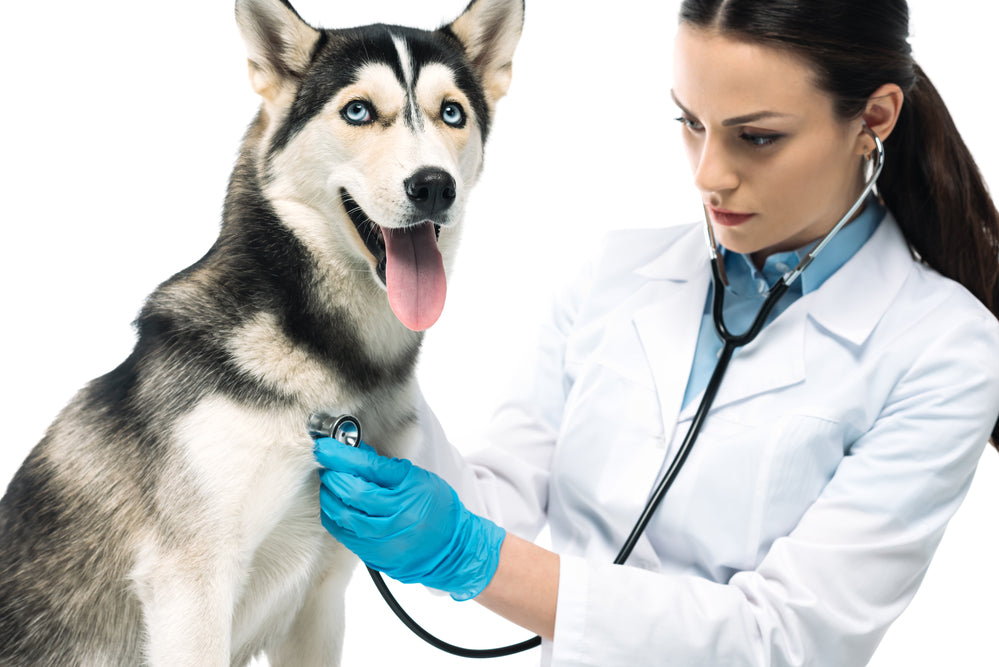In the 1800s, when a doctor sees a patient for cough, fever, and shortness of breath, he will most likely follow a different protocol than today. The doctor may feel the patient's belly or check the pulse, but the body still remains a mystery to him. The only way the doctor will be able to find out what's wrong with the patient is by asking them a series of questions about their symptoms. However, that often leads to a lot of inaccurate diagnoses because they would only get superficial information about the symptom without knowing what’s going on underneath.
Fortunately, with the advancement of technology like MRI and x-ray, we can take an in-depth look at the body to find a tumor, obstruction, or anything abnormal. However, when it comes to the heart, the main organ that supplies oxygenated blood to the body, a special device is required to listen and provide information about what the heart has to say.
Fortunately, the stethoscope was invented and has significantly revolutionized the medical world.
What is a Stethoscope?
The stethoscope is a medical device used to listen to the internal sounds of a human or animal body. It is a disc-shaped instrument placed against the skin with two earpieces. The stethoscope can be used to listen to the sounds of the lungs, intestine, and heart. If you combine this with a sphygmomanometer, you can measure the blood pressure.
What is The History of The Stethoscope?
The stethoscope was invented by a French doctor named René Laennec. When he was in medical school, he had to practice percussion, which is a technique where the healthcare provider taps their fingers against the patient’s chest to listen and interpret the sound to check for potential abnormalities inside.
One day, Renee was percussing a patient and had some trouble hearing the sound. He rolled up his notebook into a cylinder and put one side on the patient’s chest and the other side on his ears. He was excited by the quality and clarity of the sound that he decided to create a device to listen to the internal parts of the body. Because of his determination, the stethoscope was born.
In order to connect the sound that he was hearing inside the patient’s body, he decided to listen to people before they die and then bring the sounds together during the autopsy. He made some key discoveries with this experiment with the stethoscope. He discovered that when a person has fluid within their lungs, they make a strange bleating sound like a goat, which he called egophony. He also discovered sound changes in various stages of tuberculosis.
He published his discoveries, and eventually, other doctors took his research and came up with other discoveries as well. For example, in 1851, Arthur Leard created the binaural stethoscope but was perfected by George Philip Cammann. This type of stethoscope has become the standard ever since.
Sommerfield Scott Allison discovered the stethophone in 1858. This type of stethoscope contains two separate bells that allow the user to compare sounds from two different locations.
Rappaport and Sprague created a stethoscope in 1940 that contains two sides, one for the respiratory and the other for the cardiovascular system. Later on, the Rappaport-Sprague combo became the Hewlett-Packard.
Eventually, several other minor changes were made to the stethoscope; until in 1960, David Littmann, a Harvard medical school professor, created a stethoscope with amazing acoustic and lighter in weight. The 3M Littmann provides a tunable diaphragm which helps increase the diaphragm excursion.
What Are The Different Types of Stethoscope
Acoustic
This type of stethoscope focuses on transmitting sound from the chest through a hollow tube to the listener's ear. The chest piece has two sides that are placed on the patient to sense the sound. If the diaphragm, which is the plastic side, is placed on the patient, the sound can vibrate the diaphragm creating a pressure wave that goes up the tubing to the listener's ear.
If the bell or hollow cup is placed on the patient, the skin's movement will create a pressure wave that goes to the listener's ear. The bell usually transfers low-frequency sounds, while the diaphragm transfers high-frequency sounds.
Electronic
This is also called a stethophone, which is designed to overcome low sound levels by amplifying the body's sound. A few companies offer electronic stethoscopes, but it requires the conversion of acoustic sound to an electrical signal that can be processed for maximum experience.
Recording
Some electric stethoscope utilizes a direct audio system that can be used with an MP3 recorder or laptop. There are even smartphone apps that can be used as a stethoscope. The strategy is to use your iPhone as a microphone to amplify the sound and create a visualization. After that, you can email the results to your healthcare provider.
Fetal
This acoustic stethoscope is shaped like a trumpet. The doctor will place it on the pregnant woman’s stomach to listen to the fetus heartbeat.
Doppler
The stethoscope is basically an electronic device that measures ultrasound waves from various organs in the body. The change in frequency signals detection in motion. Therefore, the Doppler stethoscope is suitable for moving objects, like a beating heart. A continuous Doppler allows the auscultation of blood flow sound in a valvular movement that is often ambiguous during a cardiac exam with a regular stethoscope.
The Doppler auscultation has a sensitivity of 84% for diagnosing aortic regurgitation, while a regular stethoscope has a sensitivity of 58%. All of this means that a doppler auscultation is better at detecting abnormalities than a regular stethoscope.
How Did The Stethoscope Change The Medical World?
Our understanding of diseases has changed from an emphasis on symptoms to focusing on observing the body. This has changed several medical jargon as doctors create new anatomical words for diseases such as bronchitis, the inflammation of the bronchioles.
In the past, the patient had to feel sick in order to be considered sick. However, after the invention of the stethoscope, it doesn’t matter if the patient thinks that something is wrong; it matters more of what the doctor finds from medical tools like the stethoscope. In fact, the stethoscope was just the beginning. Eventually, we had MRI, PET, x-ray, and CT scans. All of this means that doctors are now able to detect issues inside the body rather than diagnosing based on the patient’s feelings, words, or the outside of the body.
Another thing to keep in mind is that in the past, when doctors place their ears on the patient's chest, they can only hear heartbeats, but everything is still ambiguous. The quality of sound is not enough to provide an overall picture. However, with a stethoscope, the doctor can hear murmurs and determine which valve is abnormal. The doctor can also detect leaky valves and pinpoint the amount of blood that is leaking. He or she can also detect arrhythmia, like atrial fibrillation and severe bronchitis or asthma.
Because of the stethoscope, it changed the way doctors diagnosed patients. Instead of relying on the narrative aspects, doctors can now look inside the body. To learn more about how a vet uses a stethoscope you can check out our full guide.
Final Thoughts
Medicine is all about being a detective for the body. A doctor's job is to find the diagnosis, so he or she can initiate the proper treatment. In the past, doctors often rely on what the patient tells them and what they find from various physical examination techniques. However, all of that has limitations because they can only look at the superficial aspect of the body instead of the inside. Because of the limitations, healthcare providers would miss a lot of essential information to save the patient’s lives.
Fortunately, because of the advancement of technology, we now have the stethoscope, which can help detect arrhythmia, bronchitis, asthma, heart murmurs, or any blockage in the body. There are also further inventions, like the CT scan, MRI, and PET, that can help us to detect a tumor, stroke, clots, or any damages that require prompt action.
Because of these changes, healthcare providers can save more lives and make discoveries, which means the future for medicine will continue to shine brighter than the stars.





